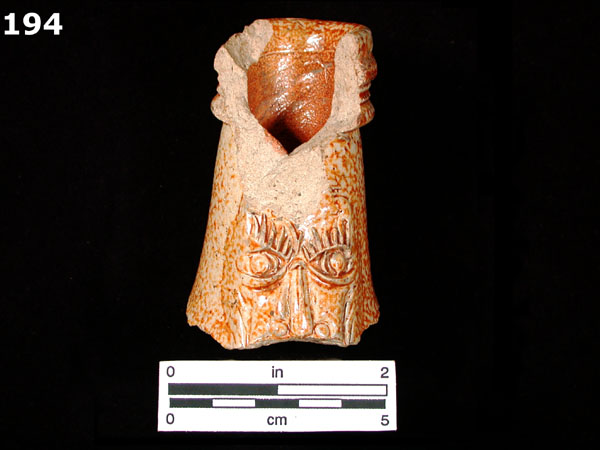View all examples of STONEWARE, BROWN RHENISH

| Type Name: | STONEWARE, BROWN RHENISH |
| Type Index: | STONEWARE |
| Production Origin: | GERMANY |
| Date Range: | 1500-1700 |
| Defining Attributes: |
Hard, thin stoneware body, usually light grey in color. Pinkish-grey or tan stoneware paste may also occur. Exterior surface is salt-glazed, and light golden brown or ginger colored. The salt glazing results in a fine, dimpled orange peel-like finish. Form is the long-necked, bag-shaped body “bellarmine” jar, and these are wheel-thrown. Decoration consists of applied molded relief elements including bearded male faces at the neck, and heraldic or decorative medallions, flowers and leaves, and bands of inscription on the body. |
| Vessel Forms: |
BELLARMINE JAR |
| Comments: | Brown Rhenish stoneware was produced primarily in the Rhine River valley of Germany and the Low Countries of Europe. "Brown Cologne Stoneware" has been used to refer to these brown stoneware jugs, however by the mid-16th century (after which most of this pottery appears on American sites), the nearby town of Frechen had replaced Cologne as a pottery center, and supplanted Raeren as the leading exporter of brown stoneware (Gaimster 1997). Brown cologne stoneware jars are also known as Bellarmines, Bartmanns, and greybeards because of the bearded male figures portrayed on the jar necks. In general, the precision and quality of the applied molded elements declines through time, however a number of exceptions to this trend have been documented. |
| Published Definitions: | Gaimster 1997; Noel Hume 1970, 2001:11-127; Klinge 1996 |